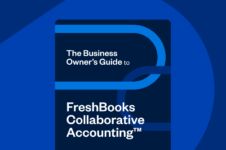Does your seasonal busines face challenges managing cash flow? Learn how to prosper in the slow season.

I once worked for a company in Queenstown, New Zealand, that provided a hot pool experience. During the busy ski season, we were always fully booked. Unfortunately, once the season ended, tourists left, demand dropped, and revenue plummeted.
Seasonal businesses face unique challenges, like employee turnover, customer retention, short planning windows, and intense competition during peak season.
But arguably, one of the biggest challenges is cash flow problems: The peaks and valleys in revenue throughout the year and slow or even nonexistent business in some months. If you’re a seasonal business owner, you may wonder:
- How will I survive the slow season and make off-season sales?
- Can I cover my operating costs?
- Will I be able to grow my seasonal business to a place where I’m thriving?
In this post, we share strategies to help you conquer cash flow so that you can run a thriving business. Many of them can be implemented right now.
Table of Contents
Is Your Business Seasonal?
You may be surprised.
Traditionally, we think of seasonal businesses as weather-dependent operations that close or slow down during winter or summer months. Or, perhaps, businesses that are supported by tourist destinations or holidays. These include ski resorts, ice cream shops, snow-removal companies, and landscaping services.
But other types of small businesses face the same cash flow problems. For instance:
- Agencies or creative professionals at the mercy of client budget cycles
- EAs and tax accountants
- Any business affected by seasonal fluctuations in supply
The advice here will apply to any small business that experiences significant cash flow fluctuations.
Let’s discuss cash flow strategies for your seasonal business.
1. Forecast Your Cash Flow
For some seasonal business owners, identifying the slow season is obvious. For others, it’s not. Think of having to deal with unpredictable client budgets.
In either case, it pays to track and forecast your cash flow year-round to better prepare for those lulls. If you have a clear picture of your cash flow in busy times versus off months, you may underestimate (or overestimate) the cash you need to keep your seasonal business afloat.
In fact, predicting cash flow for a seasonal business is often easier than for a year-round one. Why?
A year-round business deals with the regular fluctuations from one month to the next, while a seasonal business often has predictable expenses during those slow periods.
It’s even more predictable if you’re a business that closes down in the off-season because you know what expenses you’ll incur.
Once you understand your cash flow needs, you’ll be better poised to devise strategies to deal with the valleys.
2. Work All-Out During Peak Season
The work may decline during the slow months, but operating costs often remain. These costs can include paying staff (including your own salary), rent, electricity, and contractors.
You need enough cash on hand to cover those costs. You could take out a loan, but that will only mean you’ll spend the busy season paying it off. A better option is to go all in during the peak season to make as much money as possible from your core offering.
3. Adjust Your Marketing Strategy Ahead of Off-Season
As a freelance writer, my slow season is from December to January. During the year, I’m constantly cold emailing to market my services and find new clients.
I ramp up my efforts as I near my slow periods. I tell clients that I’m booking my schedule for those months. I create a sense of urgency in my communications: They should book me now if they want my services. Because many other writers slow down their marketing efforts as the winter holidays approach, despite business slowing, I’m able to capture a portion of the market.
Depending on the nature of your seasonal business, you may consider giving off-season discounts or targeting a different region or demographic. Be sure to take advantage of flexible and affordable marketing strategies like social media.
You could also use the downtime for market research, getting referrals, or networking.
4. Generate More Revenue from Existing Clients
Your existing clients are a goldmine because you already have a relationship with them. Use that relationship to upsell your current services and increase your customer lifetime value (CLV).
You could, for example, build a tiered pricing model for your services by:
- Bundling services together. For example, if you run a content marketing agency that focuses on writing content assets, you could also include SEO research and marketing strategy as you realize your clients are doing this in-house.
- Packaging different service levels. Here you present (usually 3) packages alongside each other, each with different deliverables and pricing. Prices should increase from lower- to higher-tier packages in line with incremental value. For example, a landscaper could create these 3 service tiers:
- Starter package for $1,800 (grading and sodding)
- Mid-range option for $2,200 (grading, sodding, and general maintenance)
- Premium package for $2,800 (grading, sodding, general maintenance, and specialized services)
- Package how you deliver your service process. For example, a designer could package all the steps involved in building a website—from the client briefing to creating wireframes to delivering the final project and having a project post-mortem.
Beyond upselling, you can also get clients on a retainer to guarantee a certain income. Such guaranteed income ensures a consistent cash flow.
5. Get Paid Faster
Delays in payments from clients can have a devastating effect on cash flow for a seasonal business owner. It may not concern you when business is thriving.
But, if your slow period is imminent, it can become a serious concern. After all, expenses remain even when cash isn’t coming in. You don’t want to be in a position where you can’t pay staff, bills, and outstanding debts.
The solution is to speed up payments and make sure you collect all outstanding payments from clients. Here are some ways you can make sure your invoices get paid on time:
- Send invoices immediately—as soon as you’ve completed the work. It seems obvious, but far too many service professionals fail to send invoices on time.
- Show courtesy in your invoices, as it increases the percentage of invoices paid on time by 5%.
- Provide clear payment terms upfront, specifying the exact number of days within which the client should pay you. Make sure these payment terms are included in all contracts and client agreements.
- Send a gentle reminder before the invoice is due. FreshBooks lets you automate payment reminders, so you don’t need to worry about crafting delicate emails and engaging in awkward money talk.
- Send late-payment reminders. Sometimes clients miss payment deadlines because they get busy—and all they need is a gentle nudge. FreshBooks allows you to set late-payment reminders that run on a schedule.
- Make it easy for clients to pay by accepting multiple forms of payment, such as credit cards and checkout links.
- Reward clients for early payment with a discount.
- Make sure invoices are correct to avoid back and forth with a client. Watch for common errors, like incorrect PO numbers, not specifying the payment due date, or sending the invoice to the wrong person!
And if you find yourself continually chasing late payments, perhaps it’s time you asked for an upfront deposit.
6. Diversify Your Core Offering to Extend Your Market
Some seasonal businesses will close during the off-season while others remain open. If you’re the latter, consider increasing your income in that period by adding extra services beyond your core business.
However, it’s essential that the service you offer is in line with your brand so that consumers can see the association. Think about what your customers need in the off-season.
For example, as a landscaper, you could offer snow removal services during winter. As an accounting professional who offers traditional tax services and is only busy during the tax months, you could provide financial advisory services, bookkeeping services, management consultant services, and financial advice for companies issuing share capital or merging.
Finally, suppose you’re a location-dependent seasonal business like a lawn care or landscaping company. You could expand your market to reach new customers by offering online consultations and landscape design services year-round. You could also use online remote collaboration tools like Zoom to discuss landscaping plans, present virtual landscape designs, and even offer online courses.
7. Partner With Complementary Seasonal Businesses
Consider partnering with other seasonal businesses that experience opposite seasonal patterns to maximize what you bring in year-round and provide added value to your clients. For instance, a landscaping company that’s busiest in spring and summer can partner with a snow removal company that’s busiest in winter.
Both companies can cross-promote the other’s services and recommend the other company if clients enquire about those services. They can even consider working together to create a service package that each promotes.
8. Keep Your Operating Costs Down
Operating expenses remain even when revenue falls. That’s not to mention that you’ll sometimes incur extra expenses (e.g., maintenance) to prepare for the next season.
But that doesn’t mean you can’t control and reduce costs to soften the blow of reduced income. Here are a few ways you can do that:
- Hire part-time employees for the busy season
- Communicate with vendors to negotiate better payment terms
- Instead of hiring full-time staff, consider hiring contract staff
- Lease equipment through skip payment leases and step payment leases
- Make the most of your office space. For example:
- Negotiate with the owner of your building to increase rent in peak season and reduce it during the off-season
- If you don’t need office space in the off-season, negotiate a shorter lease
- If you own the offices but don’t need them in the slow period, let another company rent
- Ask yourself: Do you even need office space? It may be that your entire team can work remotely year-round
Skip-payment leases allow you to make payments in peak season and stop payments in slow times.
Step-payment leases require payment throughout the year. You either start with a higher monthly payment that decreases with time or a lower monthly payment that increases with time.
9. Find Repeat Clients to Carry You Through the Off-Season
Repeat clients (sometimes called anchor clients) provide you with a constant stream of guaranteed income. They carry you during slower periods, ideally covering your bills in more difficult months. There are many tactics to find repeat clients. Here are a couple:
- Upsell services to existing customers: Your ability to upsell will depend on your relationship. This shouldn’t be hard if you deliver quality work on time and you’re reliable. This will help you build your income with that client.
- Tap into the network of that existing client: This will help you generate more anchor clients. Tell your anchor client that you’re on the lookout for some more business opportunities. Ask them if they can recommend you to someone. Here’s how to ask for referrals the right way.
Keep the Cash Flowing for Your Seasonal Business
Running a seasonal business can be challenging. There are months when income will be meager and, in some cases, even nonexistent.
Cash flow in a seasonal business can become a serious concern. It can leave you wondering how you will survive, cover your costs, and thrive.
Thankfully, you can take control of your cash flow. You just need to use the right strategies like:
- Planning for those slow months with cash forecasting
- Going all in during the busy months, so you have money on hand
- Adopting the right marketing strategies
- Generating more sales from existing clients
- Getting paid faster by using techniques to ensure your invoices get paid on time
- Diversifying your offering to reach new markets and guarantee extra income
- Partnering with complementary seasonal businesses to carry each other through
- Maintaining your operating costs to soften the blow
- Finding anchor clients to carry you through those tough months
Are you ready to conquer cash flow in a seasonal business? What strategies do you use?
This post was updated in August 2023.

Written by Nick Darlington, Freelance Contributor
Posted on November 3, 2017

 7 Small Business Cash Flow Problems and How to Solve Them
7 Small Business Cash Flow Problems and How to Solve Them 10 Common Invoicing Mistakes You Can Easily Avoid
10 Common Invoicing Mistakes You Can Easily Avoid How to Find and Land Repeat Clients for Your Business
How to Find and Land Repeat Clients for Your Business





